8 Most Common Types of Butterflies in the US (With Pictures)
-

- Last updated:

Butterflies are one of the most delicate and beautiful creatures on earth. There are many subspecies of butterflies found throughout the United States. Some are easier to care for than others, but all require specific conditions and a suitable habitat to thrive. Let’s take a look at some of the most common types of butterflies you may come across if you live in the US, as well as their preferred habitats, food sources, and general care requirements.

The 8 Most Common Butterflies in the US
1. American Painted Lady Butterfly
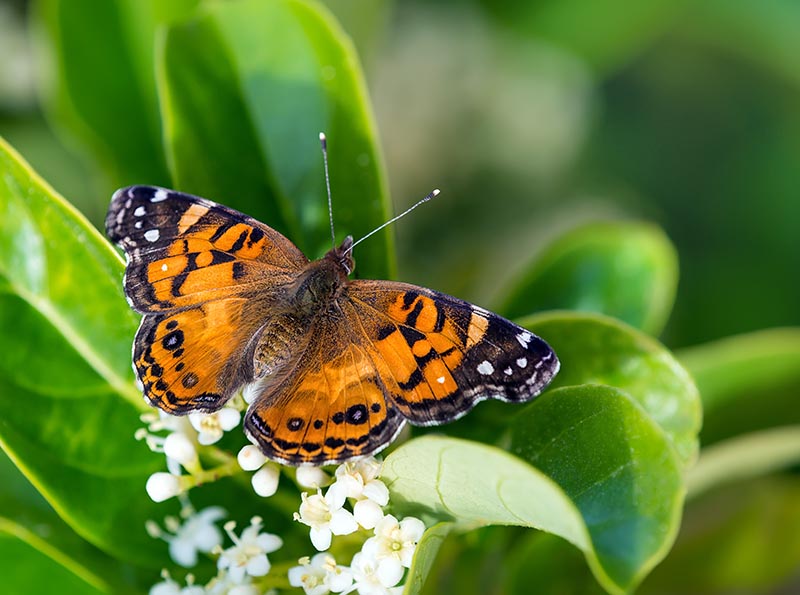
| Feed: | Nectar, sugar water, and garden plants |
| Habitat: | Gardens, parks, meadows, and fields |
This is a very common, widespread species found across the US. The adults are brightly colored, which makes them easily identifiable.
Attracting American Painted Lady Butterflies
These butterflies need a warm, sunny spot with access to nectar-rich flowering plants. Red and orange flowers like zinnias and cosmos are favorites. The plants should be planted in a way that allows the butterflies to perch at different heights.
2. Black Swallowtail Butterfly
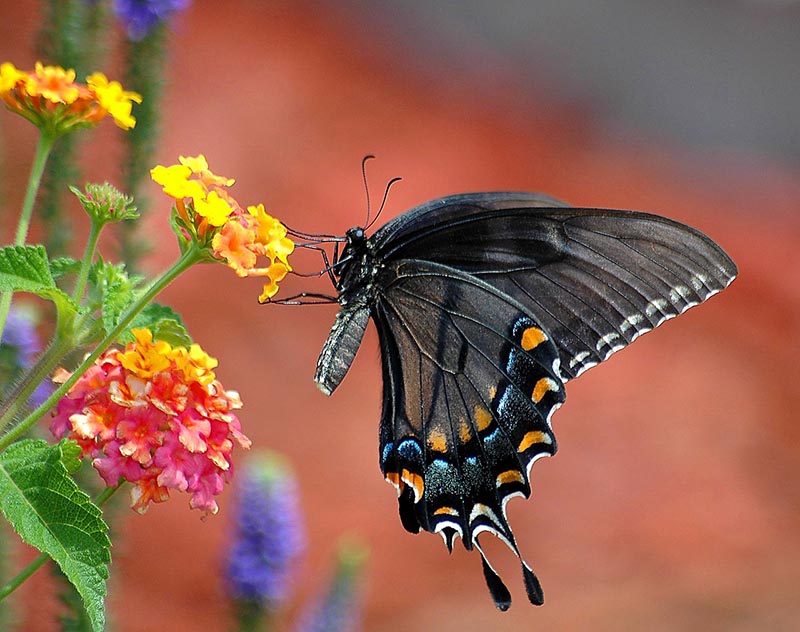
| Feed: | Nectar, sugar water, and host plant leaves |
| Habitat: | Woodlands, home gardens, and meadows |
This is another common, widespread butterfly species in the US. The larvae are green, with diagonal white stripes, and feed on the leaves of the host plant, black swallowtail butterflies are often found in wooded areas but can also be seen around home gardens.
Attracting Black Swallowtail Butterflies
These butterflies are very common in the US, but they are also one of the most difficult species to keep healthy. The larvae feed on the leaves of the host plant, Virginia creeper. You can offer the larvae the leaves of other vines in a pinch, but Virginia creeper is ideal. Otherwise, the larvae and adult butterflies can fend for themselves.
3. Blue Butterfly
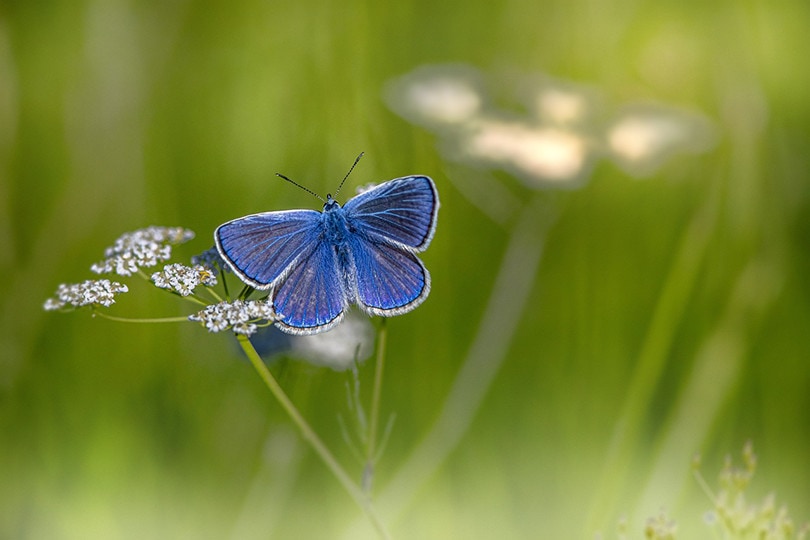
| Feed: | Nectar, sugar water, and toxic plants |
| Habitat: | Meadows, forests, and gardens |
This is a pretty, medium-sized butterfly found in the eastern US. The larvae feed on a wide range of plants, including some that are toxic to humans, like rhododendrons. For that reason, blue butterflies are often found in forests, where there is less risk of harming humans.
Attracting Blue Butterflies
The larvae feed on a wide variety of toxic plants, including rhododendrons and azaleas. If you want to attract blue butterflies, you can plant these plants or choose a host plant that is not poisonous to humans. Garden plants like cosmos, dill, and fennel are ideal.
4. Clouded Sulphur Butterfly
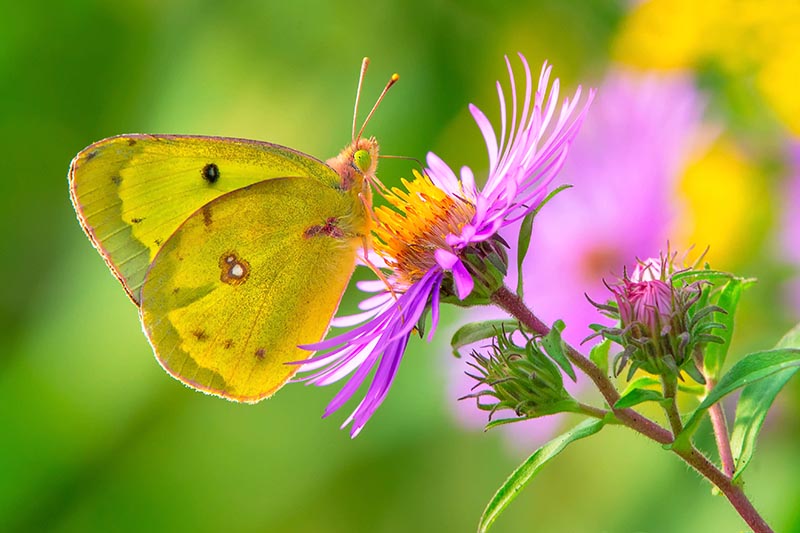
| Feed: | Nectar, sugar water |
| Habitat: | Meadows, forests, and fields |
This is a medium-sized butterfly found throughout the US. It is fairly common but not as easily spotted as other species.
Attracting Clouded Sulphur Butterflies
These butterflies are very common in the US and are easy to keep as pets. They like a warm, sunny spot with access to garden flowers like cosmos and dill. Clouded sulphur butterflies are less picky than the black swallowtail when it comes to host plants. They are happy to feed on garden plants like fennel and dill.
5. Eastern Comma Butterfly
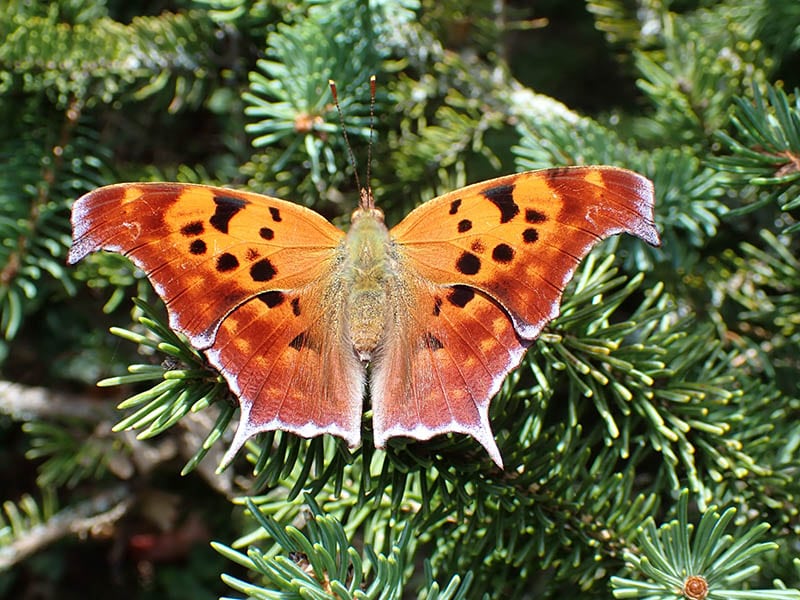
| Feed: | Nectar, sugar water, and host plant leaves |
| Habitat: | Woodlands, gardens |
This is a common species found throughout the eastern US. The larvae feed on the leaves of plants like Virginia creeper and old man’s beard.
Attracting Eastern Comma Butterflies
The larvae feed on the leaves of Virginia creeper and old man’s beard. If you plant these vines, you can attract eastern commas without too much effort.
6. Emperor Butterfly
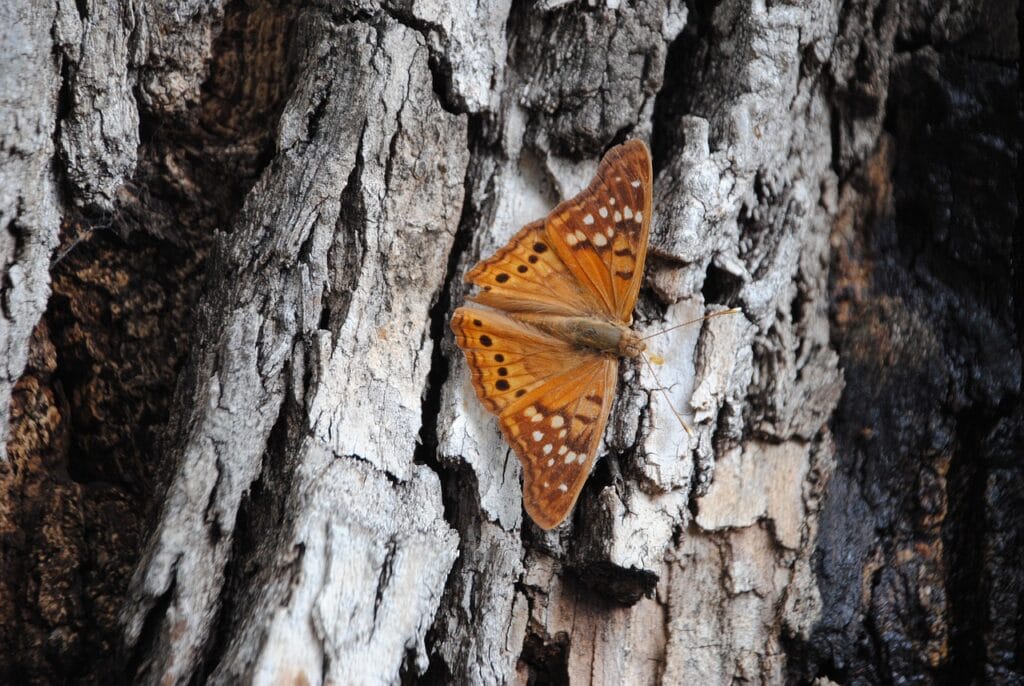
| Feed: | Nectar, sugar water, and desert plants |
| Habitat: | Deserts |
This is a large butterfly found in the southwestern US. The larvae feed on desert plants like buckwheat.
Attracting Emperor Butterflies
Emperor butterflies prefer dry, desert-like conditions. If you live in a desert climate, you may see these butterflies feeding on a wide range of native plants, which you can plant more of to attract them and keep them coming back.
7. Falcate Orangetip Butterfly

| Feed: | Nectar, sugar water, and host plants |
| Habitat: | Meadows, forests, and gardens |
This is a medium-sized butterfly found in the eastern US. The larvae feed on the leaves of plants like wild cherry and willow.
Attracting Orangetip Butterflies
The larvae feed on the leaves of plants like wild cherry and willow. If you plant these species in your garden, you can attract Orangetip butterflies without much effort.
8. Giant Swallowtail Butterfly
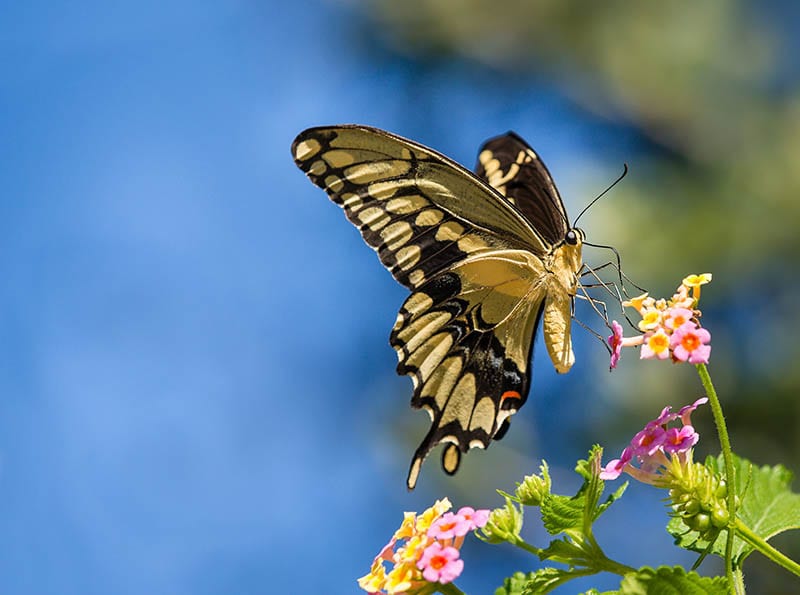
| Feed: | Nectar, sugar water, and grape vines |
| Habitat: | Deserts |
This is a very large butterfly found in the southwestern US. The larvae feed on grape vines.
Attracting Giant Swallowtail Butterflies
Giant swallowtail butterflies are native to the southwestern desert. They need a warm, dry environment to thrive. You can plant native desert plants to attract them.
Additional Tips on How to Attract Butterflies
Butterflies are beautiful, delicate insects with a lot of character. They’re also challenging to attract to your garden, as most butterflies prefer the natural habitat of woodland and hedgerow over the manicured lawns and well-kept flowerbeds of suburbia. But their skittish nature means that even if you have the perfect habitat, attracting them can be tricky.
Butterflies have a very specific set of needs in order to survive and breed in your garden. Many species feed on nectar from flowers, so ensuring your garden has an abundance of flowering plants is key. There are many different species of butterfly you can attract to your garden – here are some tips on how to do it.
Choose Where to Put Your Plants and Flowers
First things first, you need to decide on where to plant your flowers and plants. If you have a specific butterfly species in mind, you can tailor your planting to ensure you attract that species. Otherwise, you can just plant a wide range of flowering plants to ensure you attract a wide range of species. Certain plants are more attractive to certain butterflies.
For example, red and orange plants are more attractive to monarch butterflies, whereas blue and purple flowers are more attractive to tortoiseshells. So, if you want to attract a specific type of butterfly, you’ll want to plant accordingly. Otherwise, just plant a wide range of different plants and colors and you’ll be sure to attract a wide range of species.
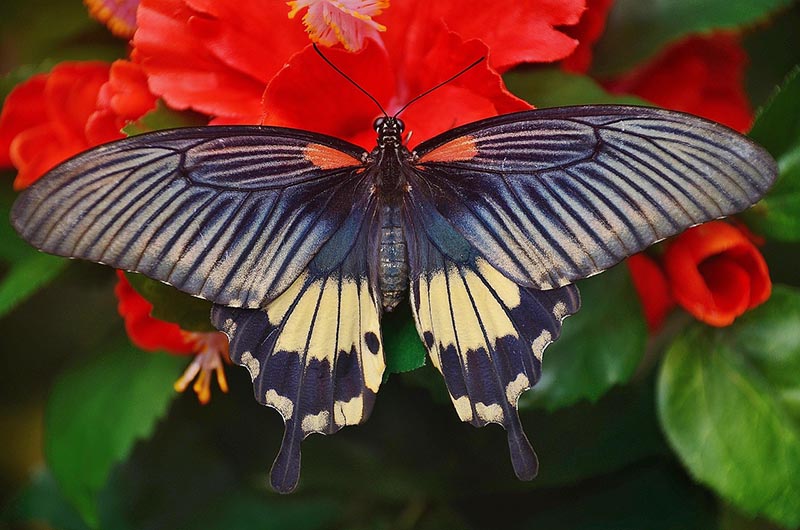
Provide Places for Butterflies to Lay Their Eggs
Once you have your flowers, shrubs, and trees planted and flowering, you need to provide somewhere for the butterflies to lay their eggs. Ideally, you’ll create a number of different nesting spots throughout your garden – each species has their own preferred space.
For example, the white admiral butterfly likes to lay their eggs on nettle plants, so you should have a few nettles in your garden. Other species prefer to lay their eggs on certain types of tree bark. You can find specific information about which butterflies like to lay their eggs on which plants and trees on websites like the Wildlife Trust or the Royal Horticultural Society.
Add Water Sources and Humidity
Butterflies need water in order to drink and many species also use water to lay their eggs. So, you’ll want to make sure you add a water source or two to your garden. One popular water source is a water garden. A water garden is a small pond filled with aquatic plants and fish. The plants are attractive to butterflies and the fish add additional humidity to your garden, which is great for keeping butterflies, especially in hot weather. If you don’t want to create a full pond, you can also add a small water fountain to your garden.
Don’t Forget the Lush Greenery
Most butterflies prefer to live in a thick foliage environment, so you’ll want to add plenty of bushes and trees to your garden to make it feel like a natural habitat. You can use these to add extra habitat for the butterflies to live in, but also to provide privacy from your neighbors and passers-by. Again, you can tailor your greenery to specific species of butterfly. For example, the red-legged bush cricket prefers to live in a hawthorn tree, whereas the wood-white butterfly prefers to live in a yew bush.
Conclusion
Butterflies are amazing creatures that are quite a sight to behold. There are so many different species that are found in the US, and many of them can be found right near your home. Attracting butterflies to your garden can be tricky, but it’s well worth the effort.
You’ll not only be able to enjoy their beauty and grace, but you’ll also be able to appreciate the delicate ecosystem they bring with them. With the right tailor-made habitat, you can attract a wide range of butterfly species to your garden. Follow these tips to plant up your garden with the plants and flowers butterflies love, and you’ll be well on your way to attracting butterflies to your garden.
Featured Image Credit: Jason King, Pixabay
Contents

